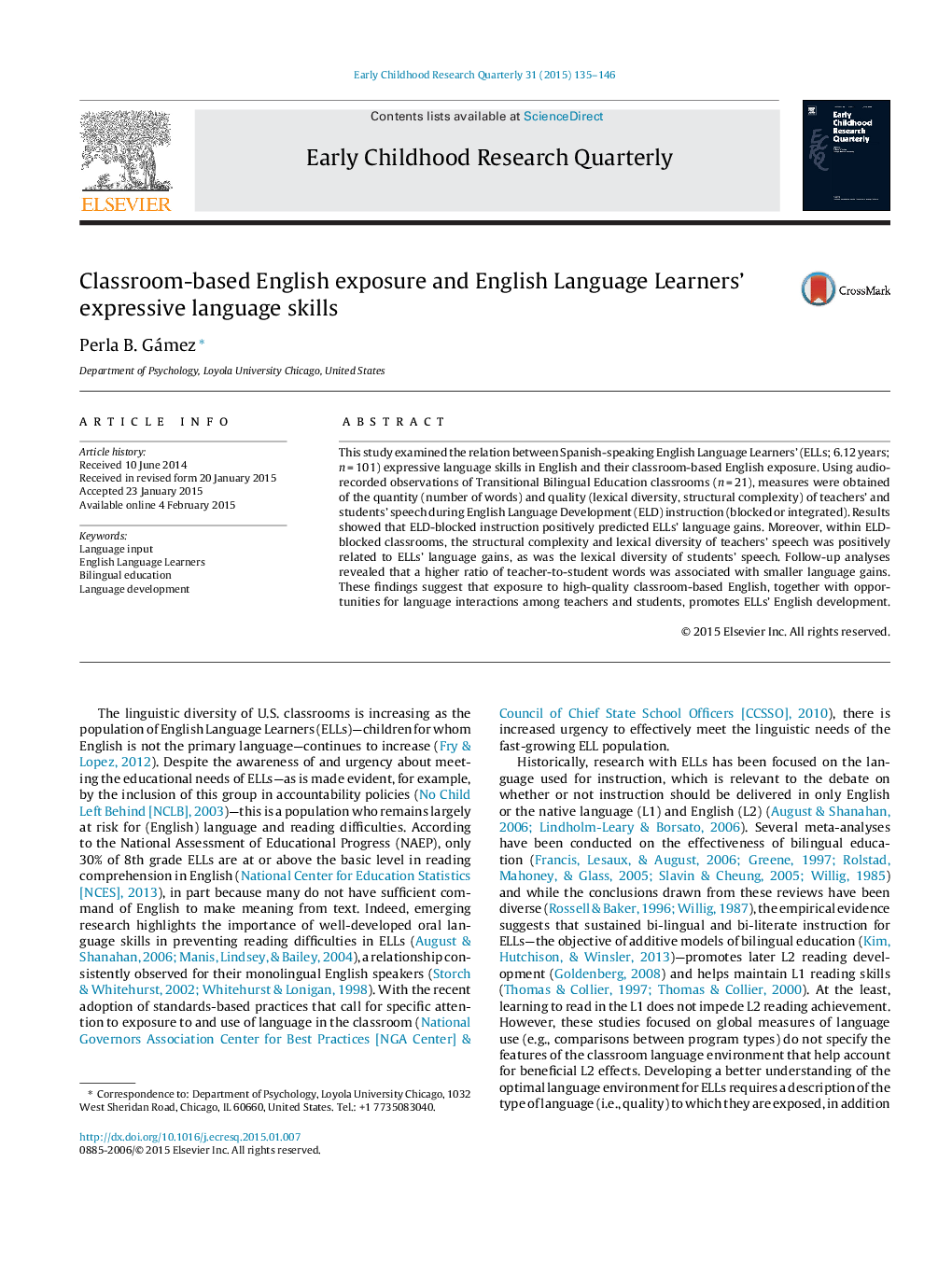| کد مقاله | کد نشریه | سال انتشار | مقاله انگلیسی | نسخه تمام متن |
|---|---|---|---|---|
| 353703 | 618938 | 2015 | 12 صفحه PDF | دانلود رایگان |
• Examined English Language Learners’ expressive language skills in English.
• Described English language used in Transitional Bilingual classrooms.
• Teachers’ speech complexity was related to ELLs’ language gains.
• Teachers’ and students’ speech diversity was related to ELLs’ language gains.
• Results suggest that high-quality English exposure facilitates ELL development.
This study examined the relation between Spanish-speaking English Language Learners’ (ELLs; 6.12 years; n = 101) expressive language skills in English and their classroom-based English exposure. Using audio-recorded observations of Transitional Bilingual Education classrooms (n = 21), measures were obtained of the quantity (number of words) and quality (lexical diversity, structural complexity) of teachers’ and students’ speech during English Language Development (ELD) instruction (blocked or integrated). Results showed that ELD-blocked instruction positively predicted ELLs’ language gains. Moreover, within ELD-blocked classrooms, the structural complexity and lexical diversity of teachers’ speech was positively related to ELLs’ language gains, as was the lexical diversity of students’ speech. Follow-up analyses revealed that a higher ratio of teacher-to-student words was associated with smaller language gains. These findings suggest that exposure to high-quality classroom-based English, together with opportunities for language interactions among teachers and students, promotes ELLs’ English development.
Journal: Early Childhood Research Quarterly - Volume 31, 2nd Quarter 2015, Pages 135–146
